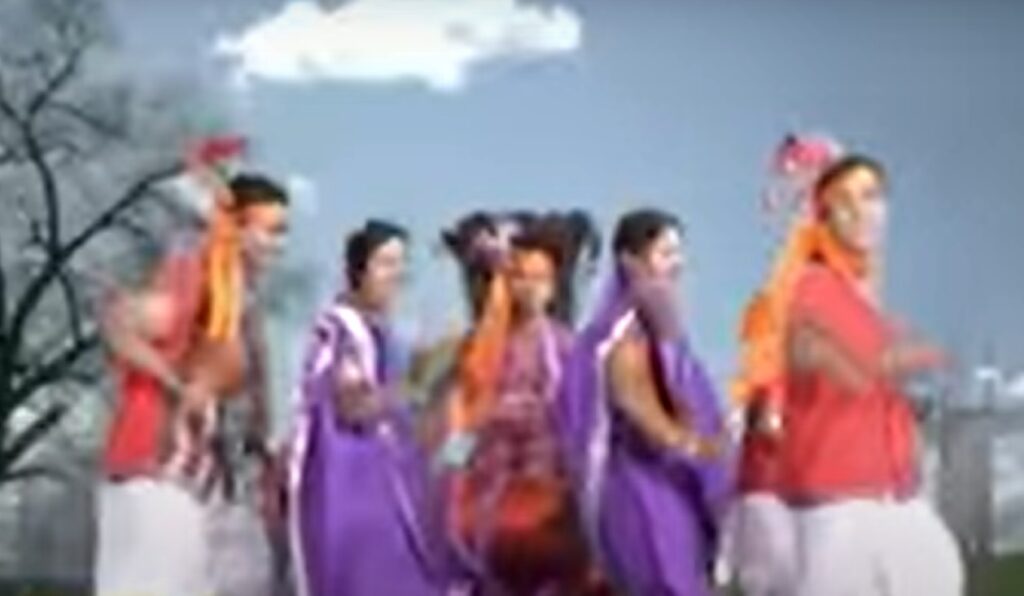Domkach is a traditional wedding dance that belongs to Jharkhand and Bihar. Popularly known as Nagpuri dance, Domkach is part of wedding festivities. The Nagpuri version of the dance is further categorized into Ekharia, Jhumta, and Dohri Domkach.

This folk dance is popular in Mithila and Bhojpur districts. Naktora, Ratjagah, Jalua, and Nakta are the various names by which Domkach has been known to people. People of Uttar Pradesh also celebrate their festivals with the Domkach dance. If you ever happen to attend a marriage in these states, you are sure to get a glimpse of this famous dance form.
The Idea Behind the Domkach Dance
The dance is representative of group strength or sabala. It is usually performed during the night, by a group of ladies. A single lady is considered to be weak. However, when women collectively form a group, they are powerful enough to fight back the thieves and snitcher. This is the message portrayed by the Domkach dance.
Dance Performance
Domkach, in modern days, is performed by both male and female members belonging to the bride and groom’s families. The family and relatives of the groom take a procession to the bride’s place. Back at the groom’s house, the women stay behind and perform the Domkach dance throughout the night, to protect the house from miscreants.
The performance takes place in the central courtyard, and it is like a theatrical act. The female folks sing multiple folk songs related to the rituals of the marriage. They play simple instruments like the dholak and ghoongroo. Some also use spoons and metal plates to produce beats.
The folks form a half-circle and hold each other’s hands as they dance to songs with satirical lyrics. The whole show is full of laughter and happiness. The dance is accompanied by various customs and also an imaginary game called Pual.
Domkach Dance Costume
The Domkach is a fun celebration done for recreational purposes. There is no traditional attire that one needs to wear for doing Domkach dance. Recently, people have brought in many innovations through matched costumes, jewelry, etc., that enhance the presentation.
Despite all modifications, the original essence of the dance and the ritual songs have been maintained by the people. This is what makes the dance a popular one.

Pingback: All Folk Dances of India - Auchitya
Pingback: All Folk Dances of India - Auchitya